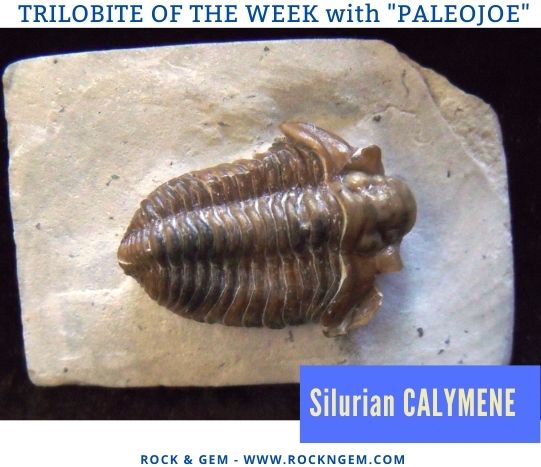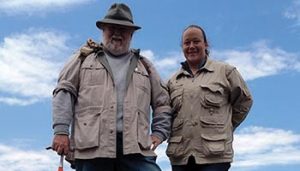
By Joseph “PaleoJoe” Kchodl
This species of Silurian CALYMENE has a very bulbous and furrowed glabella. The trilobite is roughly triangular in shape with the cephalon that is roughly semi–circular in shape.
This trilobite is fairly broad and has a small pygidium. The thorax has 12-13 body segments. They can reach a length just under 2 inches. The trilobite is found with quite a thick exoskeleton. There are many species of the CALYMENE found around the United States, each differing a bit in body structure, size and shape. Also, this species is found near St. Paul, Indiana.
DID YOU KNOW: Trilobites, an extinct form of arthropod related to insects, crabs, crayfish, and horseshoe crabs, are among the most prevalent invertebrates with hard body parts to appear during the Cambrian Period. These creatures are called trilobite due to the three distinct “lobes” running vertically through the body section.

About the columnist: Joseph “PaleoJoe” Kchodl is a paleontologist, educator, veteran, author, fossil dig organizer/guide, business owner, husband, father, and grandfather, and fossil fanatic. For decades, he’s spent hours in classrooms around the Midwestern United States and beyond, speaking to school children about fossils and fossil hunting. Visit his site to purchase fossils, contact PaleoJoe, visit www.paleojoe.com.
Plus, learn more about PaleoJoe and his daughter PaleoJen and their paleontology exploration partnership in the article “Fueling a Passion for Paleontology“.
If you enjoyed what you’ve read here we invite you to consider signing up for the FREE Rock & Gem weekly newsletter. Learn more>>>
In addition, we invite you to consider subscribing to Rock & Gem magazine. The cost for a one-year U.S. subscription (12 issues) is $29.95. Learn more >>>


 Hide i
Hide i











